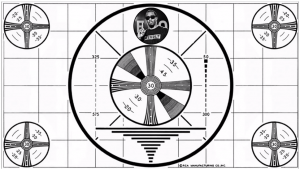Posted on April 23, 2013
by Gary Stockman

How Twitter is Making Television the “Second Screen”
This morning the Financial Times broke the news that Twitter has signed a blockbuster deal with Starcom MediaVest Group, one of the world’s largest media buying firms. The arrangement will give SMG’s clients – companies like P&G, Walmart and Coke — preferred ad slots, access to research and a jump on new products.
The news is a logical next step for Twitter, and it’s an acknowledgement of the incredible power of social media to involve us in shared experience.
Now when we watch TV, we are all sitting together on a virtual couch.
- During last fall’s presidential election, it was Twitter that pointed us urgently toward Fox News, just in time to see and talk about Karl Rove’s infamous meltdown.
- When the lights went out at the Super Bowl, we again turned to Twitter. First to learn exactly what was happening from thousands Tweeting inside the Superdome. Then to amuse each other with jokes and memes during the 34-minute delay.
- But Twitter really showed its stuff during snarkfest award shows like the Golden Globes and the Oscars. Why? Because when you’re sitting on a real couch, your witty put-downs and astute observations have an audience of just a few. But thanks to Twitter, guests on your virtual couch number in the thousands, and they applaud your wit by Favoriting and Retweeting your cleverest comments.
Interviewed about the SMG deal, Twitter’s president of global revenue, Adam Bain, told the FT: “We think that the industry has been focused in the wrong area, which was making a decision between Twitter and TV. That’s not what we believe. Twitter is a bridge.”
Short-term, Twitter is indeed a bridge – one that is making live television newly relevant for a generation that had been busily cutting its ties to broadcast and cable.
Longer-term, however, this raises an important question (one that involves, admittedly, a mixed metaphor): Between TV and Twitter, which is the tail, and which is the dog?
We all know about “second screens,” defined as additional devices that allow a television audience to interact with the content they’re consuming. But is the primary screen the one that sits passively on a wall, or is it the one you hold in your hand and actively engage with 20 hours a day?
Last summer, a Google survey showed that in a typical day, 77 percent of viewers used another device at the same time they watched TV. Put in more realistic terms: Three-quarters of us happen to have the television on at the same time we’re staring at our smart phones or tablets.
Traditionalists and insiders may never admit that TV is the second screen. But the SMG deal demonstrates a growing realization that cooperation is better than competition.
Today’s announcement is just the beginning. The advent of the virtual couch won’t be limited to Twitter. All the popular social media gathering places – from Facebook to YouTube and beyond – offer possibilities for connecting audiences with programming, and with each other.
Television remains a resilient and creative medium with lots of life left. As it gets over its hurt feelings at being labeled a “second screen” and embraces those that are becoming primary, it still will help create new and engaging forms of entertainment and information-sharing.



